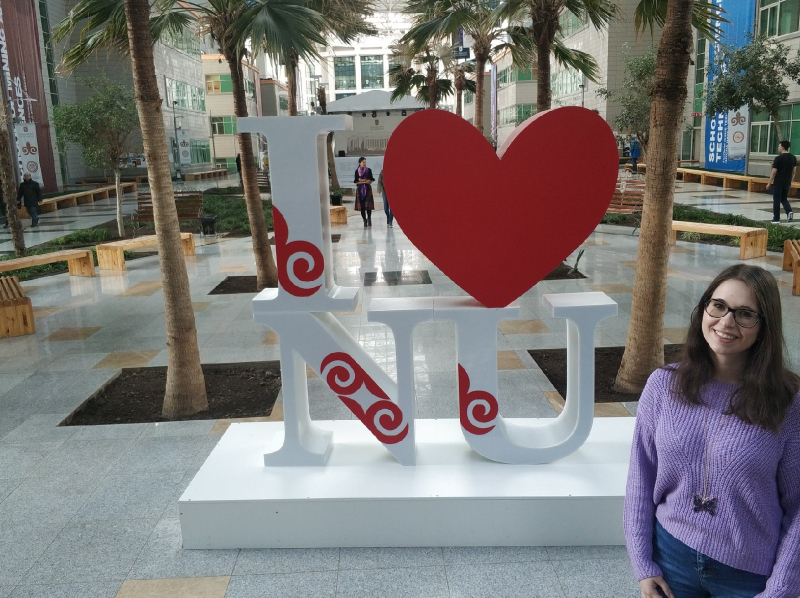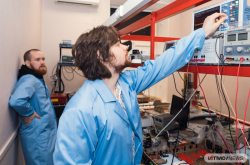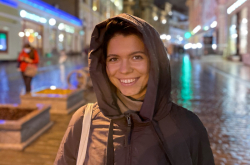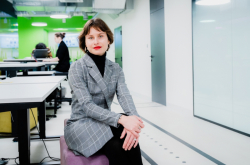In your last interview, you said that after completing your Master’s studies you were going to work in the industry. Why have you decided to stay at ITMO University? Have your research interests changed?
My main fields of studies have remained the same: molecular modelling, structural bioinformatics, and cheminformatics.
Science is actually very fascinating. However, it’s hard to predict anything when you’re dealing with it: anything might not go the way you expect. That’s why sometimes it feels like you want some stability, some specific goals that certainly can be achieved. However, it’s not the case in my field, or even in the industry overall: we’re still dealing with the research here. Plus, there’s not a lot of job opportunities in the industry related to my research interests.
It so happened that I found an option where I can combine work and study at ITMO University, and I’m fully satisfied with that. I think the fact that ITMO University offers such opportunities is one of the main reasons why I went for it. If I had to work somewhere else or not work at all, I probably wouldn’t choose to get a PhD.

Right now I work at the “Computer technologies” laboratory. I first visited it when Aleksey Sergushichev offered me to work with a small computational chemistry project there. Then I found out that you can also get a PhD there, and that’s how it began. I was given an opportunity to work on my own research along with my supervisor from Nazarbayev University in Kazakhstan.
I attended an internship there last year: I gained a lot of experience and knowledge, and luckily common research interests were found. As a result, a collaboration that will hopefully turn into excellent research for my PhD thesis.
Tell us about the internship in Kazakhstan. Why did you go there specifically? What was the project about?
Let me start from the very beginning. I was a Bachelor’s student at the Industrial Biotechnology Management program at Saint Petersburg State Chemical Pharmaceutical University (SPCPU). Once, professor Ferdinand Molnar visited the academy with a series of lectures on industrial biotechnology. At the time he was working at the University of Eastern Finland in Kuopio.
I didn’t sign up for his course because it was about practical aspects of biotechnology, whereas I wasn’t really into that: I was more interested in molecular modelling right from my first year. However, his visit coincided with our conference, and he attended my presentation. As it turned out, he’s also into modelling. A year later he paid us a visit again, and reached out to me.
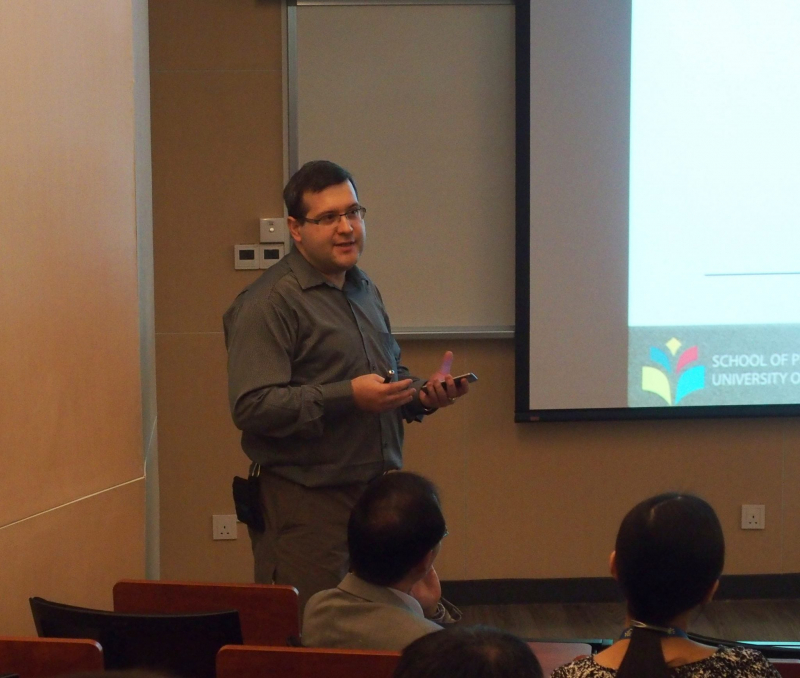
He told me that he is moving to Astana, and that he will work on various new projects for which he needs staff, so he offered me to conduct my PhD studies there. At the time, I was a second year Master’s student, so I had a lot of free time. I asked to go there on an internship to check it out.
I was working on a small project dedicated to nuclear receptors, which is the main research interest of Prof. Molnar, and their allosteric interaction. These receptors have several sites for binding with different molecules (ligandas, coactivators, DNA), and binding at one of the sites leads to conformational change in others. I researched the vitamin D’s receptor in a complex with various compounds by means of molecular dynamics methods. We were trying to study how various molecules at different binding sites influence the stability of the whole complex.
Today, I still work in this field. There are lots of secondary projects, but they all are related to nuclear receptors. Also, I continue to work on molecular dynamics and docking.
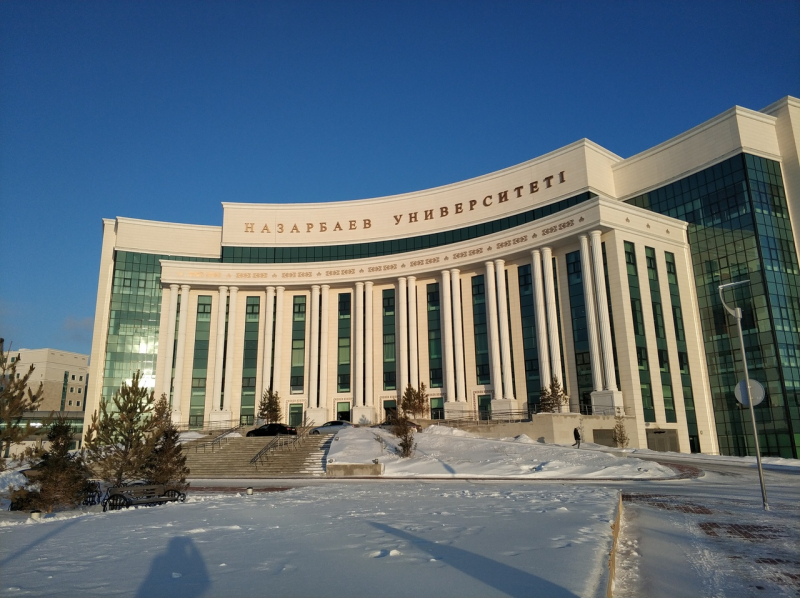
Does your research have a practical application, or is it purely fundamental?
It’s mostly fundamental at the moment. Of course, applications may be found, but right now it’s too early to say. In any case, if an application will appear, it will rely entirely on the fundamental aspect. That is, if some patterns will be detected.
I’ll elaborate on that. Nuclear receptors are one of the most popular targets for development of a new medicine in various fields. However, in order to develop something new efficiently, it’s important to understand the way a target receptor works.
Nowadays, you can find lots of articles on various processes in which vitamin D participates, but it’s all understood only vaguely.
There’s data that may lead us to the conclusion that vitamin D is somehow connected with the development of colon cancer. It can bind with cancerogenous bile acids for some reason.
But there are too many unanswered questions as of now. That’s why it’s too early to say that tomorrow we’ll begin to develop an affine molecule for this receptor, because we don’t yet fully understand what kind of an effect we want to get from that molecule.
That’s why we research it: me on a computer, and my colleagues at the lab. We’re trying to figure out fundamental aspects of the nuclear receptor’s behavior.

You’re working under an international grant right now. What are its conditions?
This is an inner grant of Nazarbayev University that was basically won by Prof. Molnar. It gave me the opportunity to travel to Astana, and to come again in the future as well, because I’m responsible for computer modelling. The grant lasts until the end of 2022.
Right now I’m in Astana for three months. The plan is to go back to St. Petersburg for three months after that, and then go to Kazakhstan again. I am to complete my PhD thesis in that manner.
What are you planning to do in the future, once you’ve completed it? Maybe there are new topics that you’re interested in?
Right now I want to study and improve my skills, and it’s not that important what field I will acquire them in. I’ve been into this for a relatively long time, for about six years, but I understand that I don’t know many things, and I have started to work on serious projects only recently. I’m working on problems that seemed complex and obscure to me only a year ago.
So, for the next four years my goal is to improve my knowledge and skills. I also hope to revise my theoretical background in order to feel more confident. However, in the nearest future my research is going to be related to nuclear receptors either way.
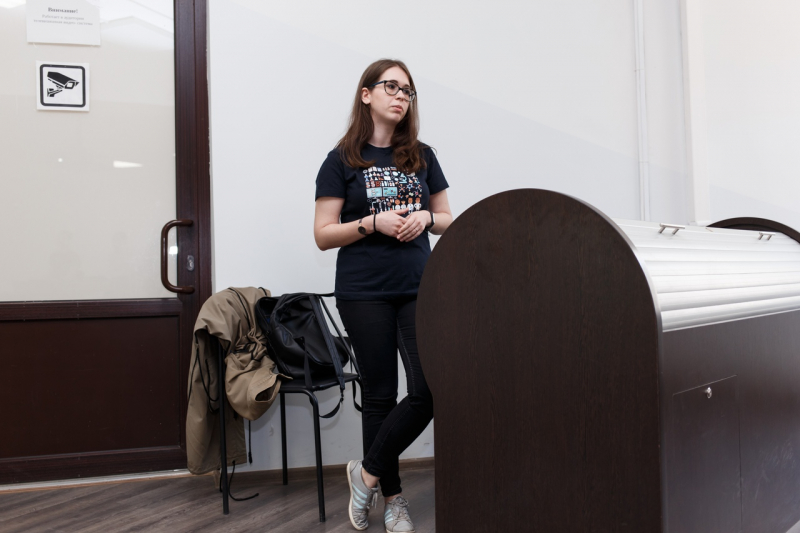
Among other fields that I’m into there’s machine learning, and I want to implement it in my work. I really want to develop the structural bioinformatics and molecular modelling fields here in St. Petersburg, so if an opportunity appears, I’ll focus on that.
You used to say that you’re into popular science: two years ago your article was awarded a second-grade certificate at Biomolecule, a popular science portal. Do you still write articles, or perhaps conduct lectures?
Actually, yes, I’m still into that. Not only because I’m interested in science popularization in general, but also in popularization of my field in particular.
I haven’t participated in any open lectures yet, but I was asked to conduct an extracurricular lecture for the students at SPCPU. Among others, representatives of various pharmaceutical companies were also making presentations there.
It took quite a lot of time to prepare as I’m not very experienced yet. However, I’m satisfied with how it went. There were lots of questions and a discussion of my work.
